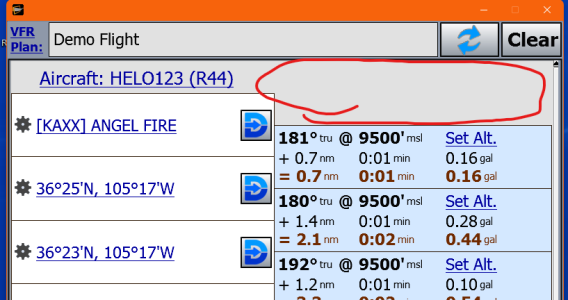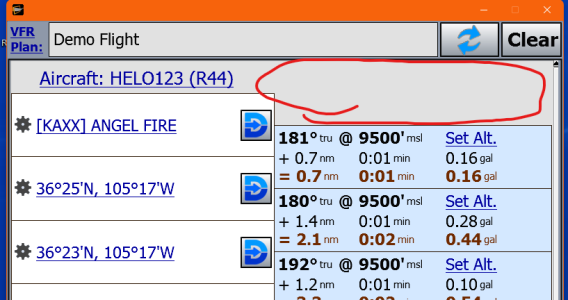When you begin a flight plan, there should be a box to enter the number of gallons of fuel already on board at departure.
((Of course, one could insert this into the weight and Balance, but (honestly) how often do you really do W&B? Especially when way under max.))
The first leg calculations are great, and you can mentally calculate how much you have minus first leg use, but wouldn't it be easier to just input FOB (Fuel on Board) when you begin the plan?//
And for that matter, when you tag a Fuel Stop, a box for how many gallons you add or plan to add. Both would provide more accuracy to the plan.
Assuming full tanks is not the same as having them.
((Of course, one could insert this into the weight and Balance, but (honestly) how often do you really do W&B? Especially when way under max.))
The first leg calculations are great, and you can mentally calculate how much you have minus first leg use, but wouldn't it be easier to just input FOB (Fuel on Board) when you begin the plan?//
And for that matter, when you tag a Fuel Stop, a box for how many gallons you add or plan to add. Both would provide more accuracy to the plan.
Assuming full tanks is not the same as having them.


